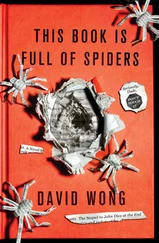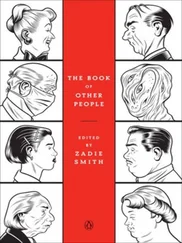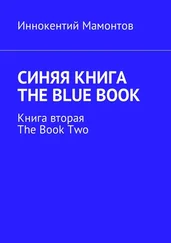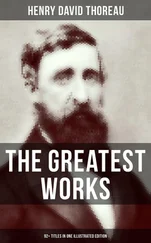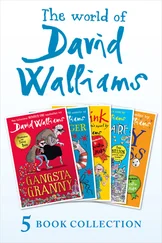8. SERGEANT VOSS’S PRIVATE ARMY
Between 1923 and 1940 ex-Sergeant Carl Voss commanded a private army. With a strength of 2,112 former World War I servicemen, when it first appeared in the field of opposing American and German troops in The Big Parade (1925), the Voss Brigade took up arms again as Riff warriors, Hessians, Senegalese, Revolutionary Americans, Chinese, Romans, Maoris and Crusaders in the years that followed. They would not only fight on both sides, but were equally adept as foot soldiers and cavalry, and as artillerymen it was said that there was no piece of ordnance they could not handle from the Roman catapult to Big Bertha. Following a stint as Fascist troops in Chaplin’s The Great Dictator (1940), their last battle was fought in Four Sons (1940), some ending as they had begun as German soldiery, others as Czechs. On the eve of America’s entry into World War II, the band of veterans was finally routed by the forces of bureaucracy. The Screen Actors Guild decreed that no agent could accept commission from an extra and their commander Sergeant Voss was decreed to be acting as such. After 232 engagements without a serious casualty, the old soldiers faded away.
9. THE LAST STAR OF THE SILENTS
Two actors who had starred in silent movies — and only two — were still performing in the twenty-first century. But with the death of Sir John Gielgud, who made his debut in Who is the Man (1924) and his last screen appearance in David Mamet’s Catastrophe (2000), there is only one surviving. He is Mickey Rooney, who appeared at the age of five in Not to be Trusted (1926) as a cigar-smoking midget, giving rise to an ongoing belief that he was a vertically-challenged adult who played child roles. Starring as a teenaged, albeit diminutive, Andy Hardy with Judy Garland as his squeeze helped to lay the myth to rest, but MGM could not resist casting the 5ft 3in. Rooney opposite 6ft 6in. Dorothy Ford in Love Laughs at Andy Hardy (1947). These roles and the hundred or so that followed may not have had quite the gravitas of Sir John’s, but Mickey outlived him to become not only the silent screen’s last active survivor but one of twenty-first-century Hollywood’s few actors of such unremitting energy that he puts in as many as four performances a year.
10. MOST MARRIED
The most married of many-times wedded Hollywood stars was B-movie luminary Al ‘Lash’ La Rue (1917–96), who went to the altar and the divorce court on 10 occasions, finally ending a turbulent life — in which he had been charged with vagrancy, drunkenness, possession of marijuana (while practising as an evangelist) and stealing candy from a baby in Florida, besides scripting porno movies — unmarried.
ANTHONY BOURDAIN’S 10 GRITTIEST, MOST UNCOMPROMISING CRIME FILMS
‘Extreme chef’ Anthony Bourdain, born in New York in 1956, rose from dishwasher to executive chef at Brasserie Les Halles in New York City via a stint with the CIA (Culinary Institute of America). He is the author of two novels, Gone Bamboo (1995) and Bone in the Throat (1997), as well as Kitchen Confidential (2000), ‘part autobiography, part restaurant-goer’s survival manual’.
‘Is it good? Is it realistic? (That leaves out The Godfather ). Is it a timeless ‘how-to’? Those are the criteria here. No good guys or bad guys — just a moral quagmire of betrayal, lust, greed and crushing, grim inevitability. That’s my recipe for a good time at the movies!’
THE FRIENDS OF EDDIE COYLE (1973, dir. Peter Yates)
You can smell the beer on Robert Mitchum as aging hood/ part-time informer Eddie, running out one last scam in a swamp of atmospheric betrayal.
GET CARTER (1971, dir. Mike Hodges)
Maybe the most vicious, hardcore — and magnificent — revenge melodrama ever filmed. Accept no substitutes. (The Stallone remake was a sin against God.)
BOB LE FLAMBEUR (1955, dir. Jean-Pierre Melville)
Elegant, beautiful, sad and wise caper movie. And the hero gets away!
RIFIFI (1956, dir. Jules Dassin)
The Citizen Kane of caper flicks.
THE KILLING (1956, dir. Stanley Kubrick)
Seedy, delicious — and with Sterling Hayden! Pure crack for film nerds.
THE ASPHALT JUNGLE (1950, dir. John Huston)
The jumbo, king-Hell noir to beat all noirs. A crime masterpiece told from the criminals’ point of view.
GOODFELLAS (1990, dir. Martin Scorsese)
Simply the best American movie ever made. Every word, every move, every inflection thoroughly believable. And funny — as only real mobsters can be.
MEAN STREETS (1973, dir. Martin Scorsese)
Scorsese’s breathtaking low-budget portrait of small-time hoods in Little Italy. It changed everything.
THIEF (1981, dir. Michael Mann)
An underrated classic. James Caan as a professional safecracker — just out of prison — trying to steal his way to a ‘normal’ life. Beautiful, grimly realistic, technically groundbreaking.
THE LONG GOOD FRIDAY (1980, dir. John Mackenzie)
Bob Hoskins owned this part. And yet a shatteringly good Helen Mirren still steals the movie. Brit-crime at its very very best.
STEPHEN KING’S 6 SCARIEST SCENES EVER CAPTURED ON FILM
The author of such bestselling novels of terror as Carrie, Salem’s Lot, Night Shift, The Stand, The Shining, The Dead Zone and Fire Starter , Stephen King is the modern master of the macabre. His style is highly visual, revealing an early and strong influence by film. Although he has probably instilled more fear in the hearts of readers than any other contemporary writer, he, too, has experienced chilling moments in the darkness of the cinema.
WAIT UNTIL DARK (1967, Terence Young)
The moment near the conclusion, when [Alan] Arkin jumps out at Audrey Hepburn, is a real scare.
CARRIE (1976, Brian De Palma)
The dream sequence at the end, when Sissy Spacek thrusts her hand out of the ground and grabs Amy Irving. I knew it was coming and I still felt as if I’d swallowed a snowcone whole.
I BURY THE LIVING (1958, Albert Band)
In this almost-forgotten movie, there is a chilling sequence when [Richard] Boone begins to maniacally remove the black pins in the filled graveyard plots and to replace them with white pins.
THE TEXAS CHAINSAW MASSACRE (1974, Tobe Hooper)
The moment when the corpse seems to leap out of the freezer like a hideous jack-in-the-box.
NIGHT OF THE LIVING DEAD (1968, George Romero)
The scene where the little girl stabs her mother to death with a garden trowel in the cellar… ‘Mother, please, I can do it myself.’
PSYCHO (1960, Alfred Hitchcock)
The shower scene, of course.
Source: Gabe Essoe,
The Book of Movie Lists (Westport Arlington House, 1981)
10 MOVIES THAT WERE PART OF HISTORY
MANHATTAN MELODRAMA
The film starred William Powell and Clark Gable as two street-wise city kids who grew up in opposite directions — one good, the other headed for the electric chair. The plot was old hat, even in 1934, but the film was enough to draw John Dillinger into the cinema with the ‘lady in red’. He had just left the cinema when the tipped-off G-men sprang their trap and killed him in the ensuing fight.
Читать дальше


